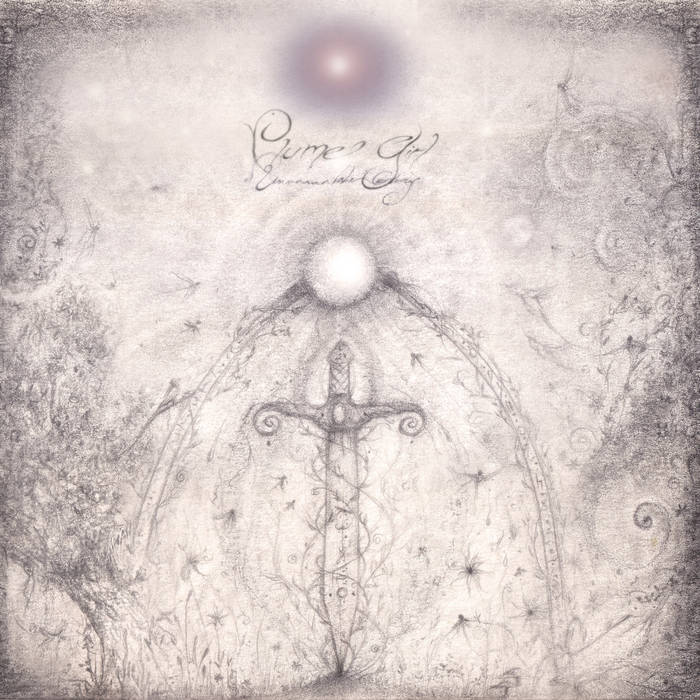For Sowmya Somanath, music is a borderless realm. Trained in Western and Indian classical singing, the Hindustani-American artist frames ragas with a facade of electronic beats, samples and random sounds. In her world, different traditions coexist innocently and peacefully. This enriching coexistence is manifested in both music and artwork. Possibly alluding to the chivalric romance about Tristan and Isolde, a sword, depicted on the cover is emblematic of connection under pretence of division.
Both visually and sonically, the new album continues the trajectory of Somanath’s previous work, In the End We Begin, originally released in 2023 and scheduled for reissue on the same day as the new record. While in dialogue, these two works show the artist in transition. Interlacing different textures – audio snippets from lectures on spiritual matters, ambient field recordings, new-age-style electronica and Indian ragas, In the End We Begin gives a perspective of someone on the move, coming to terms with emotional pain. Though drawing from the same sources, Unnameable Glory celebrates stillness. The two works are comparable to a phoenix rising from ashes.
The idea of renewal is inherent in ragas, a form of Indian classical music, and encapsulated by a rhythm cycle, also called tala. From Sanskrit, rāga translates as colouring, tingeing, or dyeing. The concept conveys a system of melodic modes, each corresponding with a specific emotion. Metaphorically speaking, ragas are a sonic palette that colour one’s mind and evokes certain feelings.
With her focus on Hindustani (North Indian) music, Somanath applies the colour-coding of ancient ragas to experimental electronica. Some tracks suggest the personal experience and background, perhaps, a reflection on the artist’s Hindustani roots and her proficiency in Indian classical music, dance and improvisation. The first minute of ‘DNA’ delivers the dreamlike ambience at a rehearsal studio where an announcement “Dance, music, the way that it feels” is followed by a woman and child, improvising on what sounds like a Hammond organ and bursting with laughter, which loops over and over, gradually disappearing in the layers of drone-ambient sound. Although geographic and cultural references might seem obvious, the resulting compositions don’t belong to any specific place. Simultaneously otherworldly and earthly, the music speaks a universal language where a wide range of emotions and feelings serve as grammatical structures. Undulating vocals on ‘Pilu’ express an unexplainable melange of grief and ecstasy.
Eerie and ethereal sounds merge hinting at dichotomy, the communication between earthly and heavenly realms. Take the second track ‘Chain’. Placed against an Angelo Badalamenti-esque keyboard wash and reverb-coated guitar arpeggio, Somanath’s hypnotic spoken word poetry sounds like a spell. The word ‘hypnosis’ comes to mind more than once as this seamless and somewhat vaporous album grows on you with each droplet of sound.


